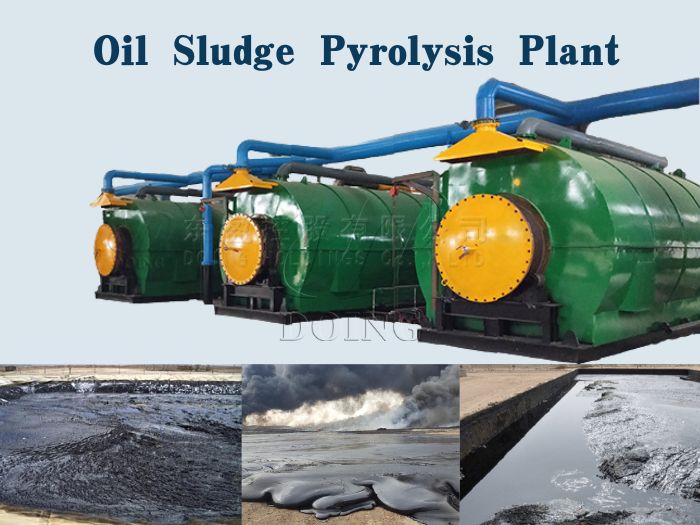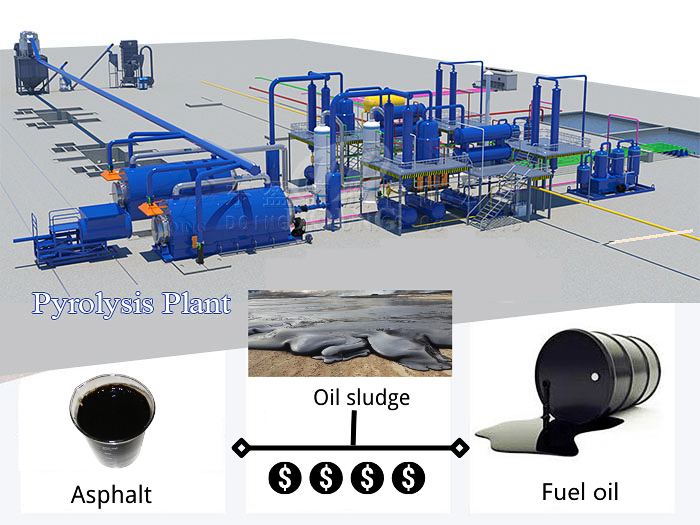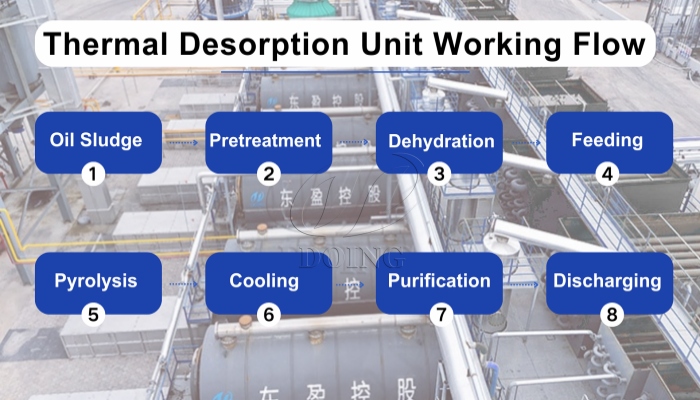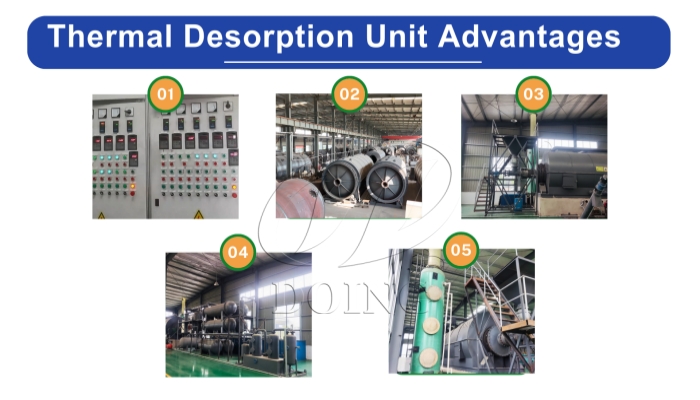 National High-Tech Enterprise
National High-Tech Enterprise
 WhatsApp
WhatsApp
 Pyrolysis Plant For Sale from TOP Manufacturer
Pyrolysis Plant For Sale from TOP Manufacturer
 National High-Tech Enterprise
National High-Tech Enterprise

 October 16, 2025
October 16, 2025Oil sludge is a common hazardous waste generated in industries such as oil refining, petrochemicals, machinery, and transportation. It accumulates in storage tanks, wastewater systems, and equipment maintenance processes, posing serious environmental risks if improperly disposed of. As a result, there is a growing demand for effective methods of recycling oil sludge and extracting valuable resources from it.
Where Does Oil Sludge Come From?
1. Oil Drilling Operations: Drilling fluids used to lubricate and cool equipment can become contaminated with oil as drilling progresses, especially when passing through oil-bearing formations. Produced fluids, which include oil, water, and solids like sand, also contribute to sludge. Additionally, maintenance activities like cleaning tanks and pipelines generate oil-contaminated waste that adds to the sludge.
2. Refining Process: In the distillation of crude oil, heavier components like asphalt and wax accumulate, forming sludge with oil, solids, and water. Spent catalyst from the distillation process also contributes.
 DOING oil sludge pyrolysis machine
DOING oil sludge pyrolysis machine
3. Wastewater Treatment: Industrial plants, refineries, and machinery generate wastewater that often contains oil, heavy metals, and other contaminants, which leads to sludge formation.
4. Storage and Transportation: In storage tanks, impurities like sand, rust, and water settle over time and mix with oil, forming sludge. Similarly, oil spills during transportation create emulsified mixtures with surrounding materials, forming difficult-to-separate sludge.
5. Tank Cleaning: Cleaning pipelines and transport containers generates waste rich in oil and other contaminants, further increasing the volume of sludge.
Oil sludge is made up of a variety of components. Typically, these include:
1.Oil: The largest component of oil sludge, accounting for 30-60%, is typically derived from crude oil, waste lubricating oil, and industrial processes.
2.Water: The water content of oil sludge varies but can comprise 10-30% of its composition, particularly in refinery sludge.
3.Solids: Heavy metals, sand, dirt, and other solid particles (typically from drilling operations) make up a significant portion of oil sludge, comprising 15-40%.
4.Toxic Compounds: A variety of chemicals are present in oil sludge, including sulfur, nitrogen compounds, and other organic contaminants.
 DOING oil sludge pyrolysis machine product
DOING oil sludge pyrolysis machine product
DOING oil sludge pyrolysis equipment, as a core technology for the sustainable recycling and treatment of various types of waste oily sludge, is gradually becoming a focus of industry attention due to its high efficiency, environmental friendliness, and resource utilization. Based on thermochemical principles, pyrolysis equipment involves several key steps: pretreatment, pyrolysis, oil-gas separation, tail gas treatment, and residue treatment. Through high-temperature heating, the organic components in the sludge are broken down into new products:
1.Pyrolysis Oil: Through the pyrolysis process, oil sludge is thermally decomposed to produce pyrolysis oil. Pyrolysis oil can be used as fuel in various industrial plants, such as brickyards, gypsum plants, and glass factories. It can also be used in heavy fuel oil generators for power generation. It can then be refined and converted into diesel for expanded applications, such as diesel generators and heavy machinery: trucks, ships, tractors, etc,
2.Natural Gas: Pyrolysis also produces gas that can be used as fuel for heating or power generation.
3.Solid Residue: Remaining solid residue is landfilled or further processed into building materials.
4.Water: Reduces wastewater generation and allows it to be treated for reuse.
However, there are also factors that affect the oil yield of sludge.
1.Oil Sludge Composition: The oil content in sludge significantly impacts the oil yield. Sludge with higher oil content (40%-50%) tends to produce higher oil yields compared to sludge with lower oil content (10%-20%).
2.Moisture Content: Sludge with high water content requires more energy to evaporate during pyrolysis, reducing efficiency and oil yield. When water exceeds 60%, the energy needed to remove it can significantly lower the oil yield and hinder the pyrolysis process.
 DOING oil sludge pyrolysis machine process
DOING oil sludge pyrolysis machine process
3.Pyrolysis Temperature: Oil yield is affected by the temperature used in pyrolysis. At lower temperatures (400-450°C), hydrocarbon breakdown is incomplete, leading to lower yields. Temperatures around 500-550°C ensure better hydrocarbon cracking and higher yields, but temperatures above 600°C can cause over-cracking and reduce the oil yield.
4.Pyrolysis Time: DOING oil sludge pyrolysis machine can be divided into fully continuous and batch processes. A fully continuous process operates 24 hours a day. A batch process requires approximately 20 hours per batch from feed to completion of the pyrolysis process. From the time the material enters the equipment to the completion of the pyrolysis process, it takes more than two hours.
Typical Oil Yield Range
1.Light Oil-Based Sludge: With higher light hydrocarbons, oil yields can range from 30%-50%, producing 30-50 kg of oil per 100 kg of sludge.
2.Heavy Oil-Based Sludge: This type, rich in high-molecular-weight hydrocarbons, has a lower yield, typically between 15%-30%.
3.Refinery Wastewater Sludge: Due to its high water content and contaminants, this sludge generally yields less oil (10%-20%), but pretreatment can improve the yield.
 DOING oil sludge pyrolysis machine advantages
DOING oil sludge pyrolysis machine advantages
Recycling oil sludge through pyrolysis is an effective solution for managing industrial waste and recovering valuable oils. DOING waste sludge recycling pyrolysis machine provides a reliable and environmentally friendly method for converting oil sludge into usable oil while helping businesses meet environmental standards. The high oil yield combined with energy recovery makes it a wise investment for businesses looking to reduce waste and increase profitability. Inquire about DOING oil sludge pyrolysis recycling equipment.
Please feel free to leave your contacts here and your privacy is protected. A competitive quotation will be provided according to your detailed requirement within one business day.